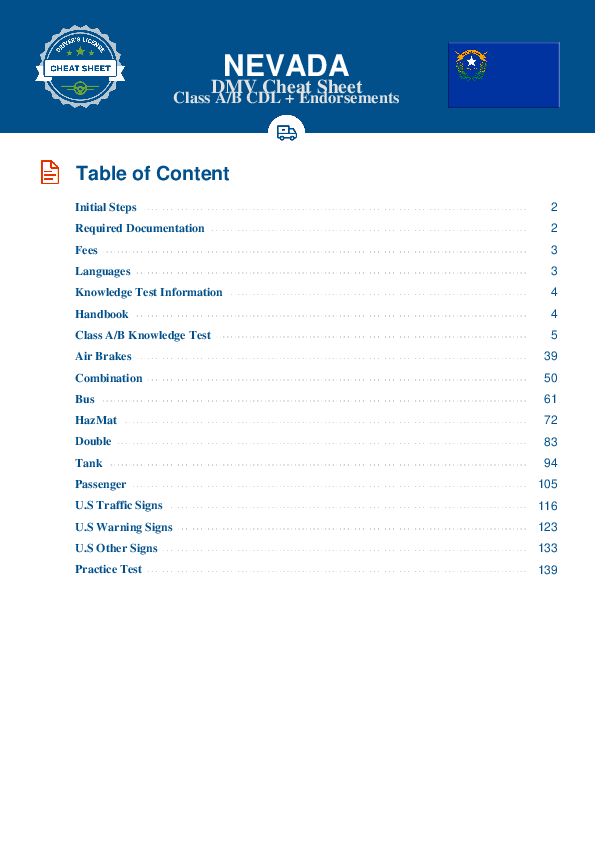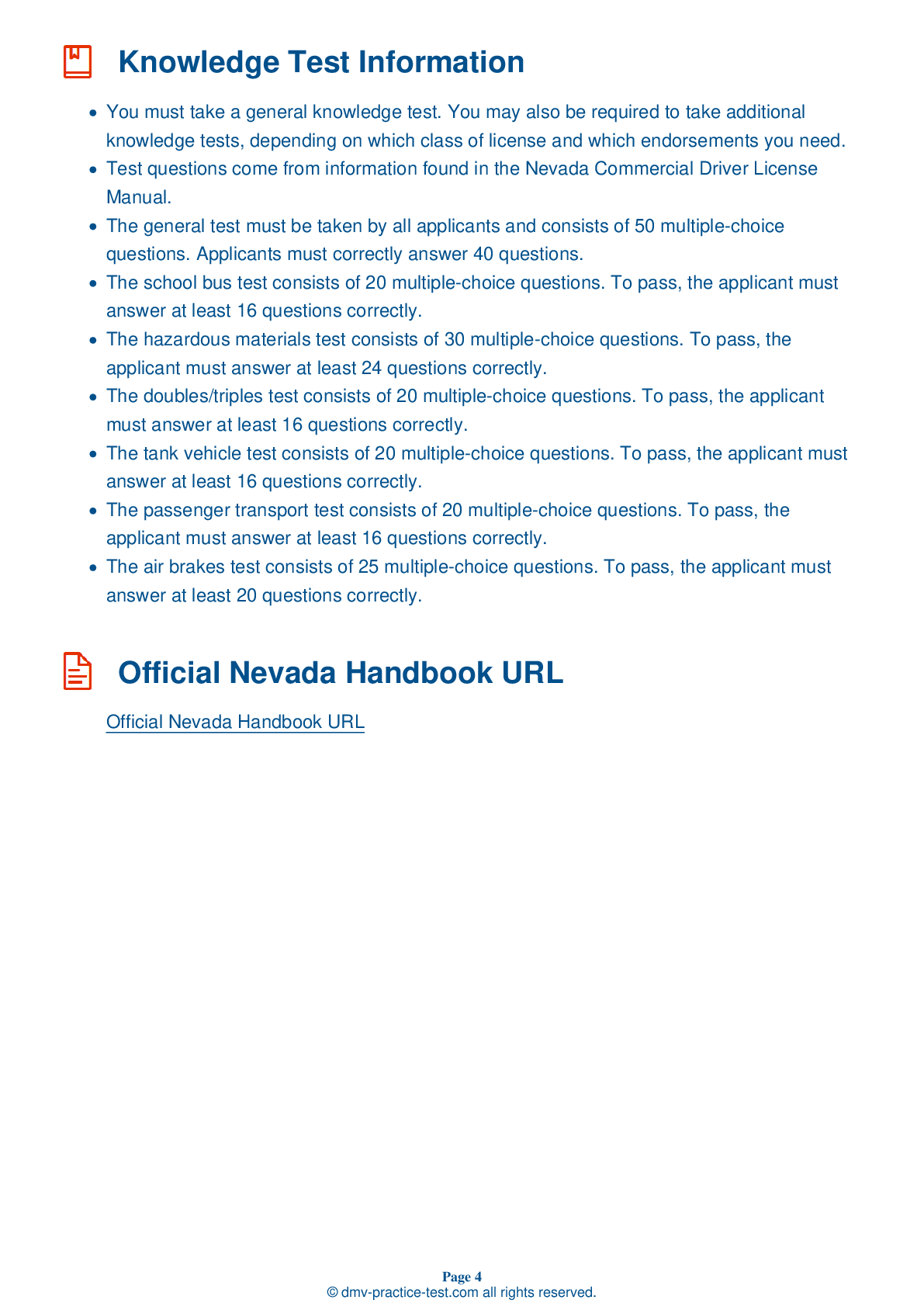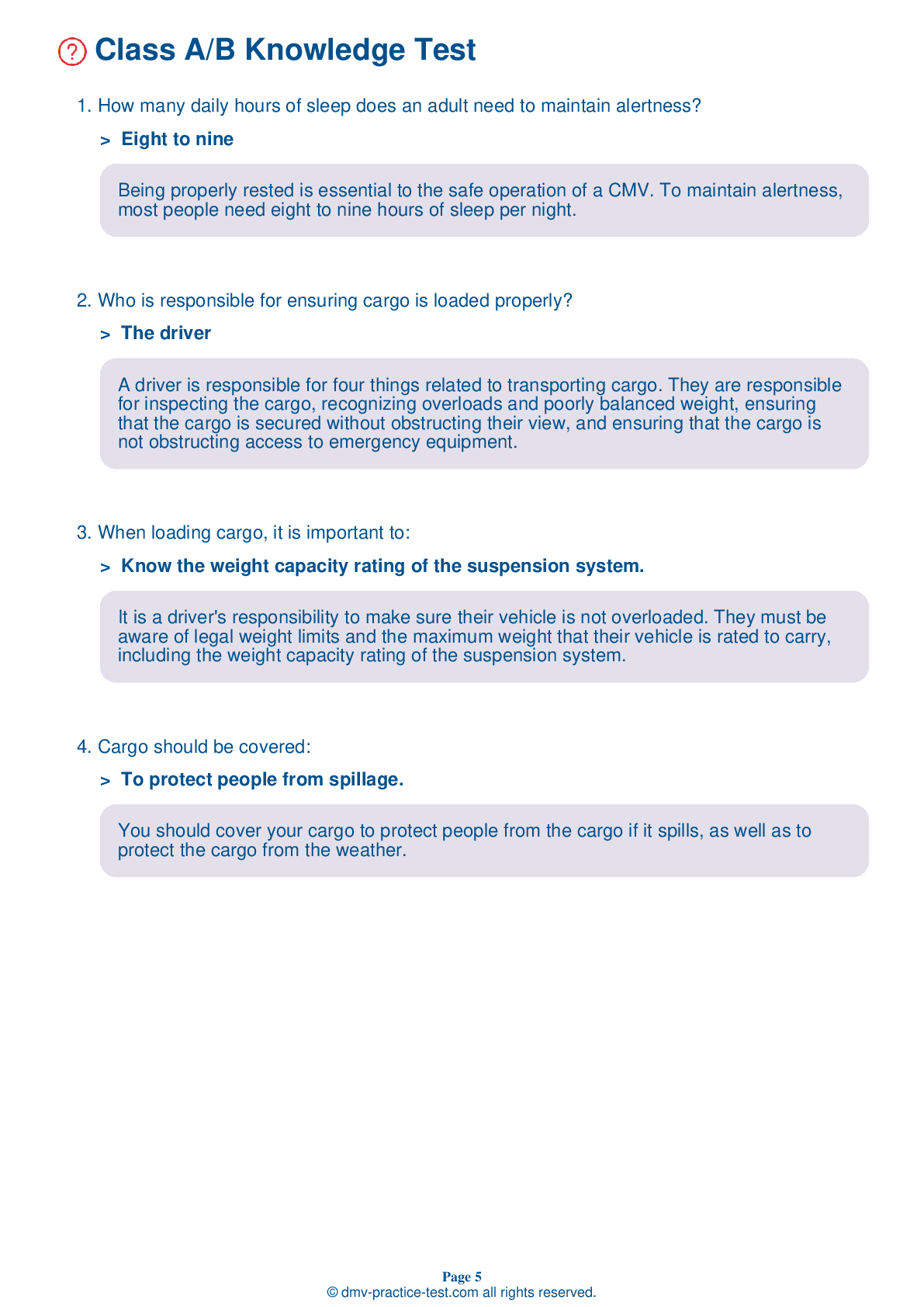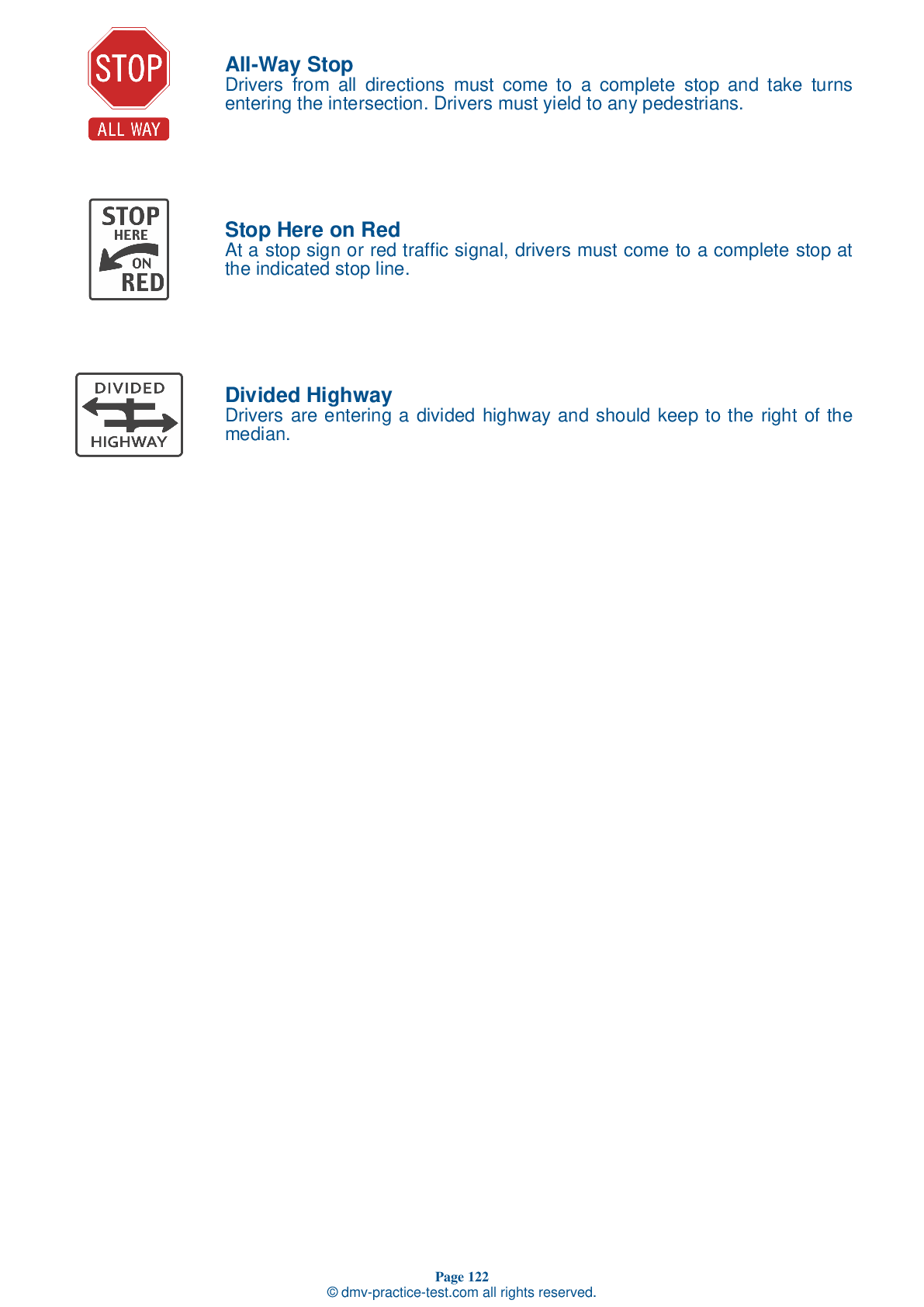Combination Vehicles Practice Test | Nevada 2025 #2 Page 2 of 3
Train for FREE online with our Nevada CDL combination vehicle test. The official exam test consists of several obligatory parts, with all of them checking your knowledge of different blocks of road rules. If you need to obtain a NV combination license in 2025, practice as much as possible. Free sample tests published on our website will help you check and improve your knowledge and boost your grades. Please bear in mind that DMV requirements for issuing a combination license may vary from state to state.
8 . When backing a trailer, you must turn the steering wheel:
When backing a vehicle with a trailer, you must turn the steering wheel in the direction opposite of where you want to go. Once your trailer starts to turn, you should turn the steering wheel the other way to follow the trailer.
9 . A driver should test the tractor protection valve by:
You should test the tractor protection valve by allowing the air supply to properly charge, turning off the engine, then releasing air from the system by pressing the brake pedal several times. The tractor protection valve should move into its emergency position when psi drops to an unsafe level.
10 . When a combination vehicle goes around a corner:
When a vehicle goes around a corner, the rear wheels follow a different path than the front wheels. This is called off-tracking. This effect is especially pronounced on vehicles with trailers.
11 . When coupling, after you've connected the air lines to the trailer, you should:
Correctly following the steps to couple and uncouple trailers is vital to safely operating a combination vehicle. After connecting the air lines to the trailer while coupling, you should supply air to the trailer.
12 . When a vehicle goes around a corner, the rear wheels:
When any vehicle goes around a corner, the rear wheels follow a different path than the front wheels. This is called off-tracking. The degree of off-tracking will be greater on long vehicles than on short vehicles.
13 . If a trailer begins to jackknife, you should not:
If a trailer begins to jackknife, you should release the brakes and allow the trailer wheels to regain traction with the road. Do not apply the trailer hand brake to attempt to straighten out the rig because it will only prolong the skid. The application of brakes is what caused the wheels to lock in the first place.
14 . Rollovers happen when:
Rollovers happen as a result of drivers taking turns too fast.
See the exact questions that will be on the 2025 Nevada DMV exam.
99.2% of people who use the cheat sheet pass the FIRST TIME
Lillian MCcranie explains how our CDL study guide was helpful in passing the exam and recommends it to everyone.
Cameron tells us how he purchased the CDL exam, and found it to be a useful tool which helped him pass the exam and find a job.



